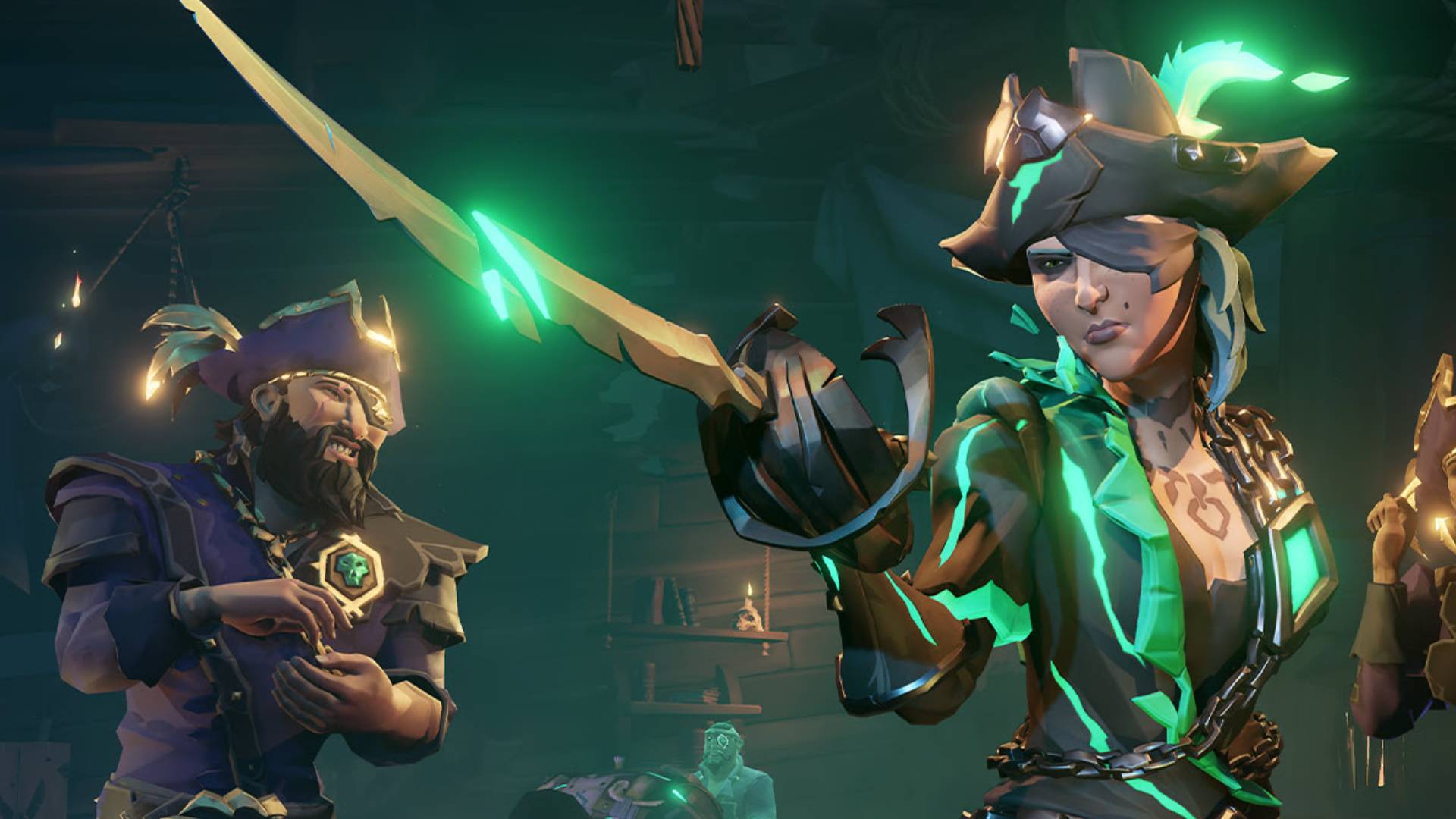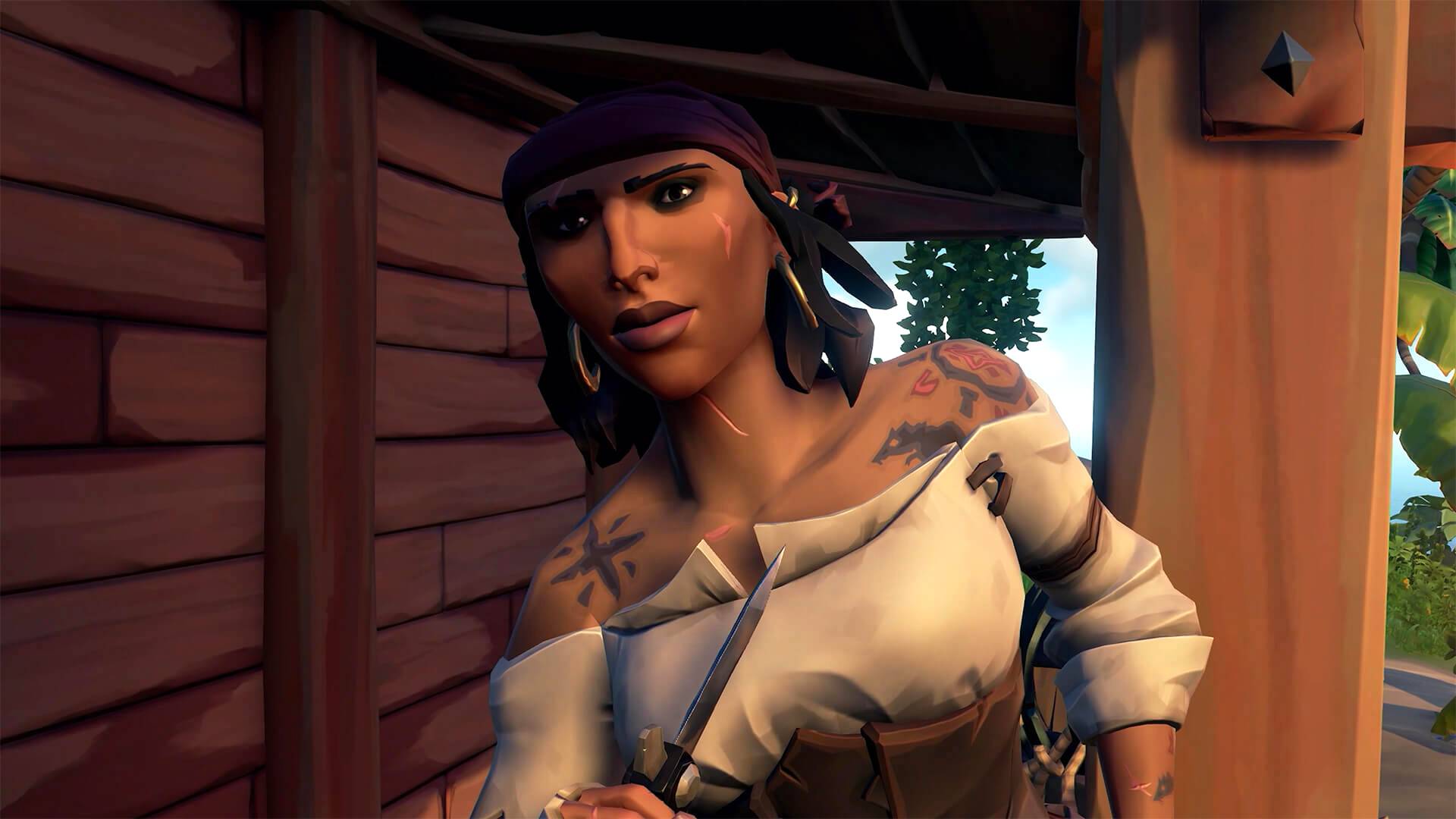Sea of Thieves is putting other live service games to shame
Mast-erclass

When it launched in March 2018, Sea of Thieves was a divisive game. It was a great mix of fun and silliness, the ships were a joy to sail and it was a blast to make stories with your friends. Outside of smashing skeletons and digging up chests of gold, there was little to do. As with many live service games, it was in danger of sinking as soon as players had burned through what was on offer.
Sea of Thieves isn’t just a success, it’s putting other live service games to shame
Yet Rare’s done something few developers accomplish; it’s grown and refined Sea of Thieves time and again. Where other games fizzle and their populations dwindle, its open-world swashbuckle ‘em up continues to set new player number records. The scope and variety of updates haven’t diminished, they’ve only accelerated. Rather than alienating players with predatory monetization, Rare’s embraced an optional, yet compelling system that appeals to the player’s vanity. The result: Sea of Thieves isn’t just a continued success, it’s putting other live service games to shame.
Full speed ahead

A healthy live service game needs content and players. A developer can’t devote resources to creating content for a game no one is playing. And we won’t keep playing a game without new and rewarding reasons to come back. Rare has balanced both.
New content constantly flows into Sea of Thieves. Since 2018 Rare’s released nearly three-dozen updates, adding missions, cosmetic items, and improvements. Some updates are small, like the Gunpowder Skeletons update that added explosive skeletons and themed challenges called ‘Commendations’ to complete. Some are massive, like the gigantic A Pirate’s Life update, which introduced new enemies, locations, and a grand adventure fully tied in with the ride and films of the Pirates of the Caribbean.
I sit on my ship's deck, recounting the day's adventures, and all the small updates that made it possible
As a day-one player, it’s amazing to me to sit on the deck of my ship, recounting the day's adventures, and all the incremental additions that made it possible. As I brandish my Dark Adventure cutlass (Season One) and set a course in the ship I captain (Season Six), I can fire at skeleton ships (Cursed Sails), set enemies ablaze with fire bombs (Seabound Soul), and fight megalodons (Hungering Deep) with my trusty monkey, The Admiral, at my side (Smuggler’s Fortune).
The brilliance of it all is how seamlessly it blends together. A new player would be hard-pressed to say what was there at launch and what came later. Everything fits so snugly from both a narrative and gameplay perspective. Juxtapose that against something like Fortnite, an enormous success in its own right, but also a cacophony of disparate and unrelated properties dumped into a battle royale sandbox in an everything-including-the-kitchen-sink approach. Everything has a purpose in Sea of Thieves and fits in the world thematically.
Loqua-sea-us

The way that Sea of Thieves manages its players should be reference material for other live service games. The team at Rare frequently communicates with its audience, offering previews of upcoming content, directly addressing feedback, and explaining how and why it’s doing things. It’s a great mix of promoting the most positive elements of development while also being honest and responsive to fair critique.
Get daily insight, inspiration and deals in your inbox
Sign up for breaking news, reviews, opinion, top tech deals, and more.
There are regular contests pushing players to create funny or interesting content, information on updates is delivered in videos aimed directly at players rather than buried in press releases, watching Sea of Thieves streamers on Twitch on certain days can earn free cosmetics, and frequent Gold and Glory weekends reliably create busy nights on the seas for pirates looking to take advantage of double loot and reputation gains.
Rare handles things that aren’t going to plan just as well, like when it released The Hunger’s Cry Adventure. The quest line is the sixth part in an ongoing and evolving story, and it pushes players into an arena similar to other multiplayer games’ raids. Some less well-meaning pirates took advantage of the fact so many players were congregating in one place and camped the area, killing them endlessly for no reward.
This communication creates something often in short supply between game developers and players: trust
This adventure went live on August 18, 2022. Rare issued a patch reducing the number of random crews encountered while in the adventure, rebalancing everything to accommodate the change, and it did all of this by August 23 -- just five days.
This clear line of communication from player to developer is rare, as is the responsiveness, but it creates something often in short supply between the people who make games and the people who play them: trust. And, because players trust Rare, they evangelize Sea of Thieves. Which, in turn, grows the game’s audience.
Pieces of eight

Live service games require constant development. It’s an expensive endeavor, and developers need revenue to cover the costs. Usually this is where paid content, like the dreaded loot boxes, enters the scene. Sea of Thieves is no different, but its monetization system is one of the most player-friendly in the industry.
Every sailor upon the Sea of Thieves can do every mission, tackle every challenge, face every adversary
Sea of Thieves doesn’t have expansion packs; every sailor upon the seas can do every mission, tackle every challenge, face every adversary. Nor are there any abilities that are only accessible with paid-for items. Everyone is on a level playing field, from the swabbies on their maiden voyage to the Pirate Legends with a thousand hours of sailing under their bicorn hat.
What you can buy in Sea of Thieves are lovingly crafted cosmetics for your ship and pirate. The unique designs are striking, and the pull to make your pirate and ship the finest on the seas is a compelling combination to invest a few dollars.
You can buy pets and outfits for them, there are skins for weapons, equipment, and absurd emotes. None of it affects how you sail or fight; Sea of Thieves is strictly pay-to-preen, not pay-to win.
Sea of Thieves is a masterclass in maintaining a healthy live service game. There’s a steady stream of new content, yet it all blends seamlessly with what Rare has already built. The well-connected community of players is both nurtured and respected, with strong communication and a responsive development team. Monetization is clever, not predatory, and threads the needle between being compelling and completely unnecessary. Sea of Thieves is sailing circles around other live service games.